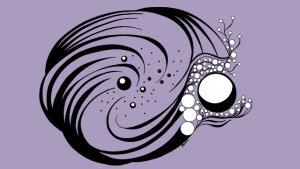In the mind of the great Greek philosopher Ptolemy, the world was ordered and simple: a series of concentric circles representing the paths of the celestial objects known at the time, with a clear distinction between the ‘here’ (humankind on Earth at the centre of it all) and the ‘there’ (the starry skies outwards).
But in the early 1600’s, Galileo, using the newly invented telescope, observed Saturn, the moons of Jupiter and the phases of Venus. This provided empirical evidence for Copernicus’ then controversial heliocentric (sun-centred) model of the Solar System. Since then, leaps in technology have led to the detection of previously unknown and unimagined cosmic bodies such as black holes and pulsars, with new discoveries continuing to be made even now.
On the 18th November 2010, a group led by Dr Johny Setiawan, from the Max Planck Institute in Germany, announced the discovery of a new exoplanet—a planet outside our Solar System. The planet is a gas giant and is known as HIP 13044b. It is thought to have about 1.25 times the mass of Jupiter and orbits its host star (HIP 13044) 2000 light years away from Earth. Astronomers detected the planet by looking out for periodic ‘wobbles’ of the host star that are caused by the gravitational effect of a massive planet orbiting close by.
With HIP 13044b bringing the number of known exoplanets to over 500, what makes this particular discovery so special? Well, this is the first exoplanet discovered which is believed to have originated outside of our own galaxy, the Milky Way.
The planet was found in the Helmi stream, a large collection of stars that stretch across the Milky Way. Research led by Dr Amina Helmi, also at the Max Planck Institute, that was published in the journal Nature in 1999, concluded that the Helmi stream, was once part of a dwarf galaxy, and was consumed by the much larger Milky Way some six to nine billion years ago, giving HIP 13044b an extragalactic origin.
That’s not the only peculiar thing. A star’s chemical composition is thought to be a major indicator of its probability for hosting a planet. Most known exoplanets orbit stars that are rich in heavy elements and that are at least as metallic as our Sun. This is because the currently accepted theory of planetary formation predicts that a higher metal content leads to faster formation of planetesimals, fragments of matter that come together under the force of gravity to create new planets. However, HIP 13044 has only about one percent the metallicity of the Sun, making it the most metal-deficient star known to have an orbiting planet. These new findings are puzzling scientists who have been forced to re-examine the current models, and to consider alternative ways in which planets may be created.
Additionally, the star has aged past the red giant stage and the planet is orbiting extremely close to it, indicating that it may have been pulled inwards from a wider orbit as the star evolved. HIP 13044b is doomed to be swallowed up when the star swells again in the next phase of its evolution.
As well as taking research beyond the boundaries of our galaxy, the finding could be useful in analysing the future of our own planetary system, and in understanding what could happen when the Sun develops into a red giant in about 5 billion years.
As the first evidence of an extragalactic planet, this discovery increases the probability that planets are as prevalent outside of the Milky Way as within it, which inevitably raises the question of how many of these planets might harbour life (see ‘Bang!’ Trinity 2010: ‘Intelligent Life: Apply Elsewhere’).
The search for new exoplanets has come a long way since their first discovery in 1995. Since 2007 the number of known exoplanets has more than doubled, providing us with new data and developing our understanding of our place in the cosmos. Certainly this is one of the most exciting fields of research in astronomy at the moment and with humans delving deeper into the cosmic unknown, who knows what undiscovered worlds await us?
Sara Lukic is a 1st year undergraduate at St Catherine’s College reading Physics.
![Out of This World In the mind of the great Greek philosopher Ptolemy, the world was ordered and simple: a series of concentric circles representing the paths of the […]](/wp-content/uploads/2011/10/Out-of-this-world_preview-620x300.png)
